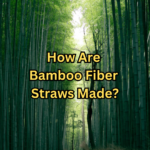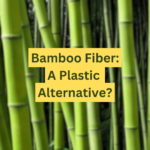
In This Article:
- Eco-Labels & Their Power: Recognizing genuine eco-labels, like ASTM, empowers consumers to drive positive environmental change with every purchase they make.
- Making Informed Choices: To truly support the environment, verify eco-label certifications, and always choose products that align with recognized sustainable standards.
- FAQs Deciphered: From understanding the true worth of eco-labels to the genuine impact of biodegradable products, the FAQs offer a deep dive into how you can be a conscious consumer.
- Takeaway: Your shopping choices can shape our planet’s future. Always choose eco-friendly products, challenge brands to be more sustainable, and encourage others to do the same.
Every trip to the grocery store, you’ve likely encountered products brandishing labels like “Biodegradable!” or “Certified Compostable”. But how often have we truly delved into what those terms represent, or the standards backing them? Enter ASTM D6400 and D6868: the rigorous benchmarks ensuring these products are as earth-friendly as they claim.
This article will guide you through the nuances of biodegradability vs. compostability, the intricate process of product testing and certification, and the potential aftermath when these items aren’t composted correctly. Get ready to arm yourself with knowledge, because as consumers, our choices hold power in the global fight against waste.
Deciphering the Lingo: Biodegradable vs. Compostable
Have you ever stood in a store aisle, holding a product labeled “biodegradable” in one hand and “compostable” in the other, trying to make the best choice for the planet? Here’s what those labels really mean.
The Real Deal on Biodegradability Biodegradability refers to a material’s ability to break down naturally over time, with the help of microorganisms, sunlight, and air. Sounds great, right? However, there’s a catch. This doesn’t give a specific time frame for complete decomposition nor does it guarantee that the item won’t leave behind any toxic residues.
Consider this hypothetical: a plastic bag thrown into the wilderness might eventually crumble away. It’s biodegrading, sure, but it might take hundreds of years and release harmful substances into the soil.
Composting: A Greener Alternative?
On the other hand, compostable materials are like the overachievers of the biodegradable world. These not only break down but do so within a relatively short period (typically a few months) in a composting environment, turning into nutrient-rich compost without releasing toxins. The transformation is so thorough that the resulting compost can nourish plants, returning valuable nutrients to the soil.
Remember when Cheri, from the neighborhood, started that community compost pile last summer? She was onto something big. By choosing compostable products, she ensured that our waste was turned into a resource, promoting soil health and reducing our carbon footprint.
Compostable vs. Biodegradable: A Simple Analogy
Ever heard that all squares are rectangles, but not all rectangles are squares? Let’s use this analogy for our eco-terms.
Compostable = Square Compostable products are the squares: they must meet specific conditions. They break down quickly, under specific conditions, without toxins, turning into beneficial compost for the soil.
Biodegradable = Rectangle Biodegradable products are rectangles. They will break down eventually, but the time frame and the after-effects can vary.
The Takeaway Just as not all rectangles are squares, not all biodegradable items are compostable. Look deeper into your eco-choices and aim for the square when it matters most!
The Role of ASTM D6400 & D6868 in the Eco-world
You’ve probably never thought about how much work goes behind those “compostable” labels on products. Well, trust me, there’s a lot. Two prime players in this scene are ASTM D6400 and D6868. But first, let’s unravel the mystery of ASTM itself.
ASTM: More than Just a Fancy Acronym
ASTM stands for the American Society for Testing and Materials, an organization with a hefty job: setting international standards across various industries. These standards ensure products, materials, and systems meet a specific quality and safety level. So when it comes to eco-products, ASTM is the gatekeeper ensuring they walk the talk.
ASTM D6400: The Gold Standard for Compostability
Let’s get down to specifics. ASTM D6400 is the standard you want to look for if you’re buying compostable products. This benchmark ensures that products (like those made of polylactic acid or PLA) can be seamlessly broken down in municipal and industrial composting facilities. But remember, it’s not just about these items disappearing; it’s about them converting into quality compost that doesn’t harm the environment.
For a fun mental picture, imagine a certified compostable plate used at last year’s summer BBQ. Under ASTM D6400, this plate should transform in a composting facility, leaving no trace, and eventually end up nurturing a vibrant patch of flowers or veggies.
ASTM D6868: For That Glossy, Earth-friendly Finish
Where D6400 focuses on products, D6868 is the game-changer for coated paper and other substrates. Ever held a glossy magazine or brochure and wondered about its eco-credentials? This standard ensures that the glossy finish, when composted, breaks down without harming the environment. Just think of it as nature’s stamp of approval for that shiny exterior.
In a nutshell, when you see products adhering to these ASTM standards, know that a ton of rigorous testing and scrutiny has been done. It’s not just marketing hype; it’s a promise. One that’s shaping the very essence of our eco-conscious world.
The Unsung Process: How Products are Tested and Certified
Behind the Curtain of ASTM Standards Think of ASTM standards like a super-tough obstacle course designed for products. Every item that wants to earn the “compostable” badge has to go through this course and prove it’s worthy1. It’s not just about throwing a product in a compost bin and hoping it breaks down. No, it’s much more than that.
- The Biodegradation Test: Products are put in a controlled composting environment, where their degradation rate is tracked. They should break down at a rate comparable to known compostable substances like cellulose.
- The Disintegration Test: Post the biodegradation phase, the product shouldn’t be recognizable in the compost mix. If your product looks like it just took a short nap instead of being composted, it fails this test.
- Eco-toxicity Test: This is the deal-breaker. After composting, the remains of the product are introduced to plants. The idea is to ensure that the compost doesn’t harm plant growth. Imagine using compost that inhibits growth. Tragic, right?
Enter the Third-party Certifiers Now, if ASTM standards are the tough obstacle course, third-party certification bodies are the stern judges making sure there’s no cheating. These organizations review the test results, verify the accuracy, and only then grant certification. BPI (Biodegradable Products Institute) is a prime example.
Why does this matter? Let’s consider a hypothetical example. Imagine two compostable forks – one tested by the manufacturer themselves, and the other certified by a third party. Which would you trust more? The latter, right? Because a third party has no vested interest in the product’s success. Their primary goal? Ensuring that claims are legitimate.
In essence, earning that “compostable” label isn’t a walk in the park. It’s a rigorous, meticulous process that ensures the product you’re holding is genuinely eco-friendly. So the next time you see a product with that label, give a nod of respect to the entire certification process behind it.
What Happens When They’re Not Composted Properly?
The Post-consumption Journey Let’s set the scene with a true story I encountered. I once met Sarah, a young eco-enthusiast who wanted to make the right choices. She bought a set of “compostable” utensils and, with the best intentions, discarded them into her garden’s compost heap1. Fast forward a few months, those spoons were still there, almost intact. Why? Because not all “compostable” items decompose equally in every setting.
You see, once a compostable product is used and ready for disposal, its journey should ideally lead to a dedicated composting facility. But, that’s not always the case.
The Right Facility Matters Most compostable products, especially those made to meet stringent standards like ASTM D6400, are designed for industrial composting conditions. These facilities maintain high temperatures, adequate moisture, and consistent turning – creating the perfect storm for rapid decomposition.
When these products end up in a backyard compost or worse, a landfill, they don’t always break down as intended. In fact, in landfills, they can take years, behaving more like traditional plastics, robbing them of their eco-benefit.
The Environmental Repercussions This mismatch in disposal can result in multiple issues:
- Wasted Potential: Compostable products in landfills become just another waste item, rather than turning into valuable compost.
- Methane Emission: In anaerobic environments like landfills, organic matter, including compostable products, release methane – a potent greenhouse gas.
- Greenwashing Risk: Brands may unintentionally mislead consumers if there’s a lack of clarity. It’s easy to buy a product thinking you’re doing good, only to realize that without the right composting setup, it’s no better than traditional alternatives.
So, the bottom line? Compostable products hold immense promise for our environment. But, without proper composting, their potential remains just that – potential. It’s like buying an electric car but running it on gasoline because there’s no charging station around. The solution? As consumers, we need to push for more accessible composting facilities and be vigilant about how and where we dispose of our eco-friendly purchases.
Why These Standards Matter in Our Fight Against Waste
The Alarming Scale of Our Global Waste Dilemma
You won’t believe the mountains of waste I once saw in a coastal town on a trip to Southeast Asia. Beaches, which should have been pristine, were dotted with plastic debris.
Locals told me that the refuse had been washed ashore, remnants of a consumer culture spiraling out of control1. We’ve got a global waste crisis on our hands.
Each year, humanity generates over 2 billion tons of solid waste. That’s roughly equivalent to 200,000 Eiffel Towers! If we don’t address this now, the consequences for our planet could be irreversible.
Tackling Waste: The Power of Standards In the face of such dire circumstances, you might wonder, “Can standards really make a dent in this massive problem?” Here’s the thing – they absolutely can.
- Trust in True “Green” Claims: Not all eco-friendly claims are genuine. But with rigorous standards like ASTM D6400 and D6868, there’s no faking it3. Products must undergo stringent testing and meet specific criteria. This helps prevent greenwashing, where companies falsely advertise their products as environmentally friendly.
- Promoting Accountability: These standards hold manufacturers accountable. If a company claims their product is compostable, it better break down appropriately in a composting facility. No half measures, no shortcuts.
- Driving Consumer Confidence: Imagine the confidence you’d have knowing that your compostable purchase will, indeed, decompose as expected! Standards provide this assurance. As consumers, we can trust that we’re making a genuine positive impact.
- Supporting Sustainable Systems: Proper standards lay the groundwork for effective waste management systems4. By ensuring that biodegradable and compostable products truly decompose, we’re taking a critical step toward reducing the strain on landfills and curbing harmful emissions.
But here’s a hypothetical (and controversial) thought for you: What if every company was mandated to adhere strictly to these eco-standards? Imagine the significant drop in misleading products and the boost in genuine eco-friendly alternatives.
So, next time you see a “biodegradable” label, ask yourself: Does this adhere to globally recognized standards? Because when it comes to combatting our waste crisis, every choice, every product, and every standard counts.
Empowering the Consumer: Making Informed, Eco-conscious Choices
Eco-labels: More Than Just a Trendy Sticker Ever stood in an aisle, scanning products and feeling slightly overwhelmed by all the ‘eco-friendly’ labels? I’ve been there. On a grocery trip last summer, I was jolted by a staggering array of ‘green’ labels on products. But here’s the thing: those labels aren’t mere marketing tools; they’re powerful beacons guiding consumers toward a more sustainable future.
Decoding the Eco-label Maze It’s one thing to see a label, and another to understand its depth. Not every green claim holds water, but with a little knowledge, you can be the savvy shopper who knows the difference.
- Research the Standards: Before tossing that product in your cart, take a quick moment to Google the certification mentioned. Reputable standards, like ASTM or EN13432, ensure products have met rigorous environmental criteria.
- Check for Third-Party Verification: A genuine eco-label often has a third-party endorsement. This means an independent organization has verified the product’s claims, adding an extra layer of trustworthiness.
- Look Beyond the Label: Sometimes, the broader company ethics matter just as much as the product. Does the company have a sustainability report? Do they invest in renewable energy or fair trade? Dive a little deeper.
The Ripple Effect of Your Choices By supporting products with legitimate eco-labels, you’re doing more than just personal good; you’re casting a vote for a better world.
- Fueling Demand for Genuine Eco-products: Every purchase signals to brands what consumers value. By choosing certified items, you push more companies to prioritize and invest in sustainability.
- Reducing Environmental Footprint: Certified biodegradable or compostable products are designed to have minimal impact, meaning they won’t linger in our environment for centuries.
- Encouraging Ethical Practices: Many eco-certifications also consider the human aspect – fair wages, safe working conditions, and more. By supporting these, you advocate for better global practices.
Now, here’s a hypothetical for you: what if every consumer started making such informed choices? We’d have companies scrambling to be the best in sustainability, not just profits.
In the end, the power lies in your hands, or rather, your shopping cart. Every label, every product, and every choice molds the kind of world we’re building. So, the next time you shop, remember: you’re not just buying a product; you’re shaping a legacy.
Frequently Asked Questions
Why do eco-labels even matter to someone like me? Honestly, I used to ask myself the same thing. But here’s the deal: eco-labels aren’t just trendy stickers; they’re your roadmap to a better planet. Every time you choose a product with a legitimate eco-label, you’re literally voting for a sustainable future. It’s a game-changer.
Aren’t all ‘green’ labels basically the same thing? I used to think so too, but no, they’re not. While some labels might be marketing gimmicks, others, like the ASTM or EN13432, set rigorous environmental standards[^2^]. But, don’t just take my word for it; always double-check the certification mentioned.
How can I tell a genuine eco-product from a fake? Great question! First, Google the certification. Next, look for third-party verification, because if an independent organization backs it, it’s likely legit[^3^]. Lastly, dig a bit into the company’s broader ethics. Trust me, a little homework goes a long way.
Is it true that supporting eco-products can influence companies? Absolutely! Every purchase you make tells brands what you value. So, if you consistently choose sustainable items, companies will race to offer even more eco-friendly options. It’s kind of empowering, right?
Are compostable products really better than regular ones? Compostable products are like the superheroes of the eco-world. They not only break down but also enrich the soil as they do so. Compared to regular waste that sits in landfills emitting methane, compostable items are like a breath of fresh air – literally!
What about other certifications? Are they all reliable? While many certifications offer genuine benefits, it’s crucial to stay informed. For instance, while Fair Trade focuses on ethical labor practices, others might be more about organic ingredients or animal welfare. I say, be curious, be skeptical, and always verify.Alright, but what if I slip up and choose a non-eco-friendly product once in a while? Look, we’re all human, and I’ve had my moments too. But it’s the bigger picture that counts. One mistake won’t undo all the good. Keep striving, keep learning, and remember that every eco-friendly choice you make is a step in the right direction.
Sources:
- “Terminology for Biorelated Polymers and Applications.” International Union of Pure and Applied Chemistry. ↩
- “Composting.” United States Environmental Protection Agency. ↩
- “About ASTM International.” ASTM International. ↩
- “Standard Specification for Labeling of Plastics Designed to be Aerobically Composted in Municipal or Industrial Facilities.” ASTM D6400-19. ↩
- “Standard Specification for Aerobic Compostability of Plastics Used as Coatings on Paper and Other Compostable Substrates.” ASTM D6868-19. 2019. ↩
- “Methane Emissions from Landfills.” Environmental Protection Agency. ↩
- “What a Waste 2.0: A Global Snapshot of Solid Waste Management to 2050.” World Bank. ↩
- “Guide to ASTM Test Methods for the Analysis of Petroleum Products and Lubricants.” ASTM International. ↩
- “Environmental Labels and Declarations.” ISO Standards. ↩



